Understanding Pet Birds with Short Lifespans

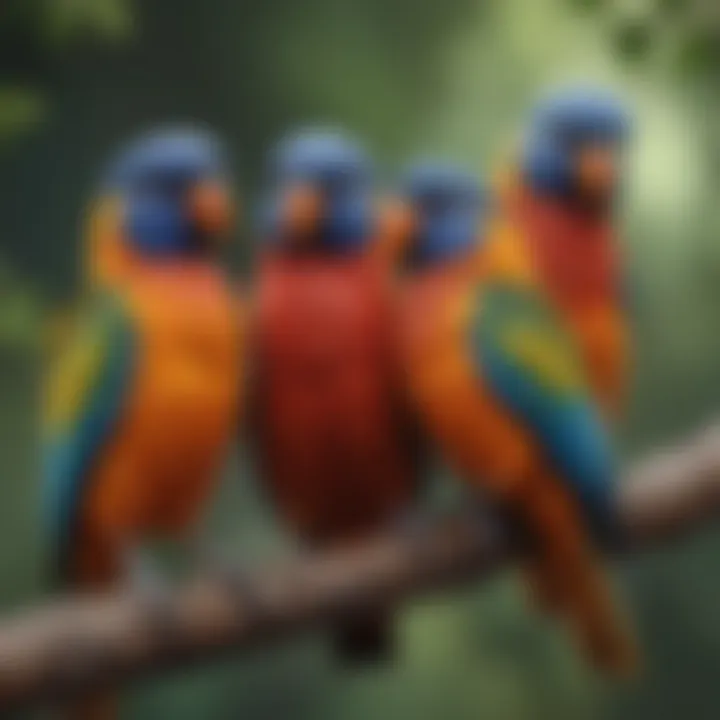
Intro
Pet birds that have shorter lifespans can be fascinating companions. The unique beauty and charisma of these creatures bring special moments, even if their time with us is limited. Understanding the specific needs and care requirements of these birds is crucial for fostering a bond that enhances their quality of life and provides owners with cherished memories.
This article will explore several aspects of pet birds with shorter lifespans, including essential care tips, behavioral insights, nutrition guidelines, health and wellness considerations, and strategies for enriching their daily lives. Each section aims to equip caretakers with the knowledge necessary to create a supportive environment for their feathered friends.
By understanding these aspects, bird owners can ensure they meet emotional and physical needs, ultimately promoting well-being. A ready grasp of their requirements can make every moment more meaningful, even in the face of impermanence.
Preface to Short-Lived Pet Birds
Pet birds can bring joy and companionship to an owner's life. However, understanding those that have shorter lifespans is crucial. This unique group of birds requires specific considerations. Owners must be aware of their needs and behaviors. Doing so improves the experience for both the bird and the owner.
Overview of Lifespan in Pet Birds
When we talk about the lifespan of pet birds, it varies significantly across species. Common short-lived species like budgerigars and canaries typically live between five to ten years. In contrast, larger parrots can live for decades. Recognizing these differences is critical for potential owners. It shapes expectations and helps guide care strategies.
Research shows that lifespan in pet birds is affected by several elements, including genetics, environment, and diet. Owners of short-lived birds must engage actively in their care. This engagement maximizes the quality of life these birds enjoy in the time they have.
Importance of Understanding Lifespan
Why does understanding lifespan matter? Short-lived pet birds often face emotional challenges both for themselves and their owners. These birds may have a vibrant, energetic presence, but their time is limited. Acknowledge this to form a stronger bond. When owners recognize their bird's brief lifespan, they can foster a deeper connection.
"Appreciation of a pet's temporary nature allows for a more profound bond, creating cherished memories in a short time."
This knowledge influences the way owners approach care. By prioritizing health, environment, and social needs, they can ensure a fulfilling relationship. Understanding lifespan also helps to navigate the complex emotions that arise when the time comes to say goodbye. From making informed decisions to focusing on quality over quantity, this understanding fosters responsible stewardship over these wonderful creatures.
Species Overview
Understanding the various species of pet birds that have shorter lifespans is crucial for prospective pet owners. Short-lived birds often have specific care needs and behaviors that should be recognized. Knowing about these species allows you to make better choices regarding their care and companionship. This section provides detailed insights into commonly kept short-lived bird species. It will offer a sound basis for your decision-making as a bird owner, while also addressing some challenges these birds face.
Common Short-Lived Bird Species
Finches
Finches are widely appreciated for their vibrant colors and melodious songs. Their presence in a home often brings cheerfulness. These birds typically live 5 to 10 years, which makes them an ideal choice for those looking for a shorter commitment. One notable characteristic of finches is their social nature; they thrive in pairs or small flocks and require companionship to feel secure.
The small size of finches makes them easy to care for compared to larger species. However, their lively behavior requires a spacious cage with plenty of enrichment to keep them engaged. This demand for social interaction and space can be both an advantage and a disadvantage, as it can lead to more committed care routines.
Canaries
Canaries are famous for their singing abilities and bright plumage. They generally live around 6 to 10 years. One key characteristic of canaries is their gentle temperament, making them suitable for families and those new to bird ownership. They do not usually require extensive social interaction, as they can be content as single pets.
A unique feature of canaries is their remarkable range of colors and patterns, which can add visual appeal to any environment. However, their singing can be influenced by factors such as environment and health, which requires owners to be attentive to their well-being. Moreover, that distinct sound may not suit everyone's preference, hence the need for thoughtful consideration before bringing one home.
Budgerigars
Budgerigars, commonly known as budgies, are among the most popular pets worldwide. Their lifespan typically ranges from 5 to 10 years. Budgies are known for their friendliness and vocal abilities. They can learn to mimic sounds and even human speech, which makes them engaging companions.
One of their most appealing features is their adaptability. Budgies can thrive in various living conditions, provided they have enough interaction and space. However, they also require a balanced diet and regular mental stimulation. Their sociable nature means they can become lonely if kept alone for long periods. Therefore, potential owners should consider acquiring at least two budgies to facilitate social interaction.
Less Common Species with Limited Lifespans
Lovebirds
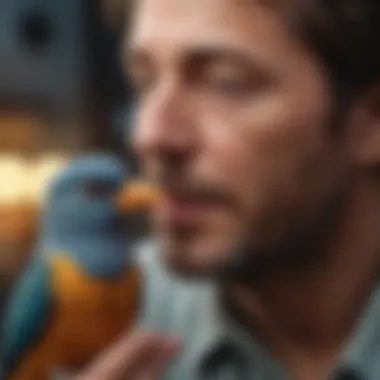
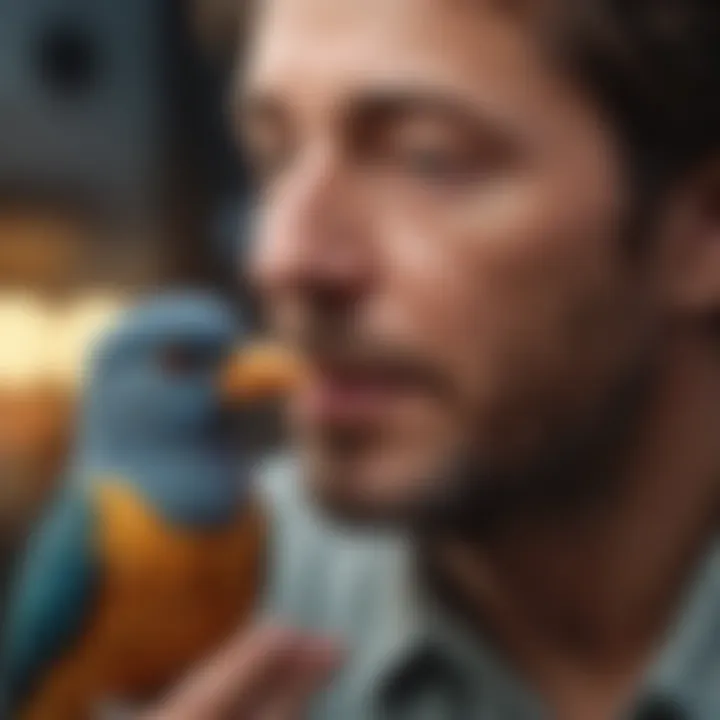
Lovebirds, known for their affectionate behavior, typically live 10 to 15 years. They require a strong social bond, preferring to be housed in pairs. Their playful and engaging nature makes them delightful companions. However, their social needs and tendency to bond closely with their partner might limit interaction with humans.
The challenge with lovebirds is ensuring they have enough stimulation. A bored lovebird can develop behavioral issues. Owners should provide toys, activities, and opportunities for safe out-of-cage time to keep them engaged.
Parrotlets
Parrotlets are small but exceptionally lively, usually living around 15 years. They are known for their bold personalities and intelligence. Their size allows them to adapt well to smaller living spaces, making them suitable for apartment dwellers.
One downside is their strong territorial nature, which can lead to challenging behaviors if not managed. They require regular interaction and mental challenges to keep them happy. Owners must dedicate time daily to interact with their parrotlet, ensuring they remain mentally stimulated.
Some Tropical Birds
Certain tropical birds, depending on the species, can have lifespans of about 5 to 12 years. These birds often have striking colors and unique calls that can enhance any home. Their tropical backgrounds make their care somewhat specific, requiring particular environmental conditions.
These birds may also be less common in captivity, impacting their availability and, potentially, the level of care they receive. Owners should research thoroughly before choosing a tropical bird, ensuring they can meet its needs in terms of habitat and diet.
The correct understanding of each species' needs can greatly enhance the owner-pet relationship, ensuring mutual satisfaction and well-being in the limited time shared.
Factors Influencing Bird Lifespan
Understanding the factors that influence the lifespan of pet birds is crucial. Knowing these elements helps owners take better care of their feathered companions. Here are the primary aspects that affect their longevity:
Genetic Factors
Genetic factors play a significant role in determining how long a bird can live. Each species of bird has its own inherited traits that influence its health and lifespan. Some birds are naturally predisposed to certain health conditions that can shorten their lives. For example, certain breeds of budgerigars may have a higher risk of respiratory issues due to their genetic makeup. When choosing a pet bird, it's essential to consider the lineage and health history of the bird. Breeders should provide documentation on the genetic background of their birds, which can aid in understanding potential health risks.
Environmental Conditions
The environment in which a bird lives can significantly impact its health. Factors such as air quality, space, and temperature play important roles in their well-being. Birds kept in environments with poor air circulation or exposure to harmful substances may face health challenges that can reduce their lifespan. A safe and accommodating habitat allows each bird to thrive. Cage size matters too; birds need space to move and exercise. Additionally, environmental enrichment through toys and social interaction can enhance their quality of life, ultimately contributing to longevity.
Nutrition and Diet
Nutrition is a cornerstone of health for pet birds. An appropriate diet, tailored to the species, helps maintain good health. Birds need a balanced mix of seeds, pellets, fruits, and vegetables. Poor nutrition can lead to illnesses that shorten lifespan. For instance, a diet high in fat and sugar can lead to obesity and heart disease. Owners should research the dietary needs specific to their bird species and consult a veterinarian to create an optimal feeding plan. Providing fresh and varied food ensures they receive the necessary nutrients to stay healthy.
Healthcare and Veterinary Attention
Regular healthcare is vital for maintaining the health of pet birds. Finding a veterinarian that specializes in avian care is essential. Birds are susceptible to various conditions that can be detected early with routine check-ups. These include dental problems, respiratory infections, and nutritional deficiencies. It is important for owners to schedule regular visits to help catch potential health issues before they escalate. Preventative care, including vaccinations and routine blood tests, can prolong a bird's life. Proper healthcare goes hand in hand with attentive monitoring of any changes in a bird's behavior or appearance, which can indicate health problems.
Remember: The combination of genetic factors, environmental conditions, nutrition, and healthcare creates the overall landscape of a bird's lifespan. Understanding these influences leads to better care and, ultimately, longer lives for our cherished pets.
Care Techniques for Short-Lived Birds
Taking care of pet birds with shorter lifespans requires specific techniques. Understanding these care methods is essential for pet owners. It can enhance the well-being of the bird and improve the bond between the owner and the pet. Attention to correct environmental conditions, nutrition, and regular health checks lays the foundation for a fulfilling companionship.
Creating an Enriching Environment
An enriching environment is critical for the mental and physical well-being of short-lived birds. These birds, although not with long life, need stimulation to thrive. This includes providing toys, perches, and different areas in their cage for exploration.
Birds like finches and budgerigars are active and curious. Engage them with various toys that promote interaction. Rotate toys regularly to maintain interest. Some key elements are:
- Different perches with varying textures.
- Mirrors to stimulate social behavior.
- Safe materials for chewing, like untreated wood.
An enriched habitat fosters their natural behaviors, reducing stress and promoting activity. Birds in a stimulating environment are generally more happy.
Optimal Nutrition Strategies
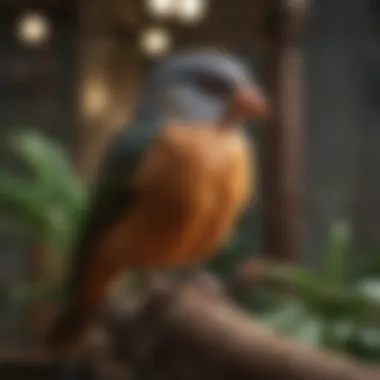
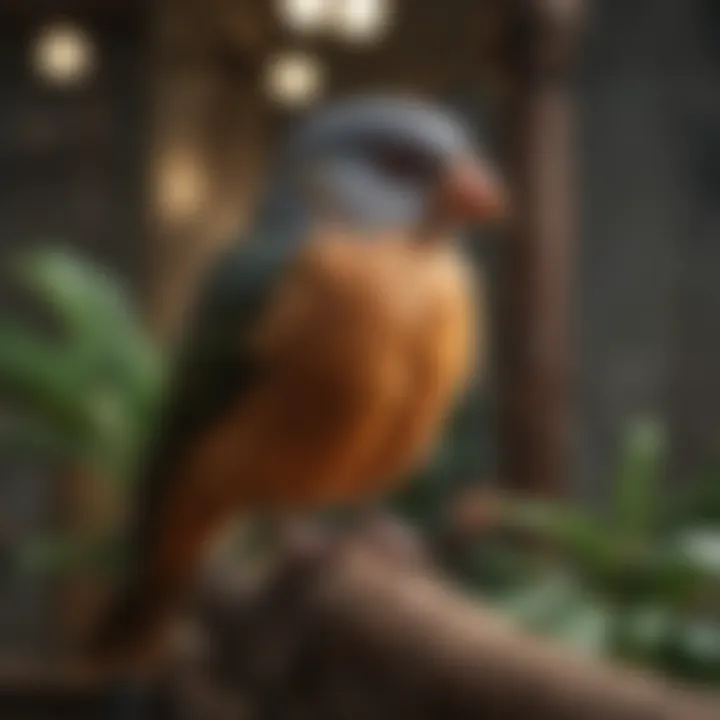
Proper nutrition is another cornerstone of bird care. Short-lived pet birds often suffer from health issues either from poor diet or feeding habits. A balanced diet that replicates their natural intake supports longevity.
Focus on quality seed mixes, fresh fruits, and vegetables. For example, canaries benefit from leafy greens. Budgerigars often prefer pellets designed for their species, ensuring adequate nutrient intake. Here are some tips for optimal nutrition:
- Avoid high-fat seeds as a primary food source.
- Offer a variety of fresh produce daily.
- Consult with a vet for specialized diets if needed.
Healthy nutrition not only supports the physical health of the bird; it also enhances overall mood and behavior.
Regular Health Check-Ups
Routine health check-ups contribute greatly to the well-being of short-lived birds. Many potential health issues can be caught early with regular veterinary visits. This practice helps avoid serious complications or unexpected suffering.
Schedule check-ups at least once a year, or as recommended for particular species. During visits, vet may check:
- Weight and changes in appetite.
- Feather and skin condition.
- Signs of distress or illness
Taking these preventive steps ensures that the bird gets timely care. A healthy bird tends to have better quality of life and a happier existence.
"When we understand the specific needs of our birds, we can provide a flavor of life that is rich and satisfying for the time they share with us."
Behavioral Insights
Understanding the behavioral aspects of pet birds, especially those with shorter lifespans, is crucial for their care and companionship. Birds exhibit various behaviors that reflect their health, social interaction, and emotional well-being. Identifying and interpreting these behaviors allows owners to provide better environments and enhance their pet's quality of life. Being aware of these insights can also assist in nurturing stronger bonds, ensuring the birds feel safe and secure in their homes.
The unique behavioral traits of short-lived pet birds influence their interactions with humans and their environments. Each bird species can have specific actions both indicating their needs and expressing their feelings. Understanding these traits is essential for creating a positive atmosphere that caters to their individual needs.
Common Behavioral Traits
Common behavioral traits in birds can vary significantly between species, but there are several general actions shared by many short-lived pet birds. These include vocalizations, preening, and social playfulness.
- Vocalizations: Many birds communicate through sounds. They may mimic human speech, whistles, or chirps to express emotions or attract attention. Paying attention to these sounds is key; vocal changes can signal stress or illness.
- Preening: Birds engage in preening to maintain their feathers. This behavior indicates good grooming habits and comfort in their environment. A bird that stops preening may be feeling unwell or stressed.
- Social Playfulness: Budgerigars, finches, and canaries often exhibit playful behaviors, such as chasing or interactive play with toys. These actions not only entertain but are vital for their stimulation and social needs.
Recognizing these traits helps owners identify changes in behavior, which may signal health issues or emotional distress.
Understanding Their Social Needs
Social interaction is a fundamental component of a bird's life. It significantly influences their overall health and emotional state. Short-lived birds generally thrive in social settings, as they are inherently flock animals. Providing opportunities for interaction, whether with human companions or other birds, fosters a happy and fulfilling life.
- Companionship: Birds often seek companionship from either their owners or other birds. This could involve cuddling or simply being nearby. If left alone too often, birds can experience loneliness, leading to depression or behavioral issues.
- Social Dynamics: Understanding the social hierarchy within the flock or among other birds can help owners manage interactions to ensure harmony. Introducing new birds should be done gradually and with caution to avoid territorial conflicts.
- Interactive Play: Setting aside time for interactive play enhances bonding. Engaging in activities, such as training or playing with toys, satisfies their social needs and alleviates boredom.
As devoted pet owners, recognizing these social requirements will help ensure that birds lead happy, enriched lives, ultimately making the bond between the pet and owner more rewarding.
Emotional Considerations for Owners
Caring for pet birds with shorter lifespans presents unique emotional challenges for owners. This section explores the significance of these aspects in the lens of avian care and companionship. The short lifespan of these birds compels owners to approach their relationships with heightened sensitivity and awareness. Understanding the emotional dimensions surrounding these cherished pets can enhance the experience of ownership and foster deeper bonds.
The Impact of Short Lifespans on Bonding
The reality of a short lifespan can profoundly affect how pet owners bond with their birds. Many species, such as budgerigars and finches, typically live between five to ten years. This finite timeframe forces owners to contemplate their relationships with these birds in a different light. Owners may become more attentive, pouring their energy into fostering a close connection and maximizing the joy found in companionship.
Moreover, the intensity of these bonds can lead owners to go against their natural inclination to hold back emotionally. Instead, they might cultivate a greater emotional investment, making every moment with their birds precious. The understanding that their time together is limited encourages memorable interactions, leading to moments filled with affection and happiness. This heightened awareness enriches not only the life of the pet bird but also enforces a sense of fulfillment for the owner.
Coping with Loss
Loss is an inevitable aspect of life, and when it comes to pet birds with shorter lifespans, it can be particularly challenging. Owners often find themselves wrestling with feelings of grief and sadness after the passing of their feathered friends. The bond formed over the years creates a deep emotional impact, making the experience of loss even more intense.
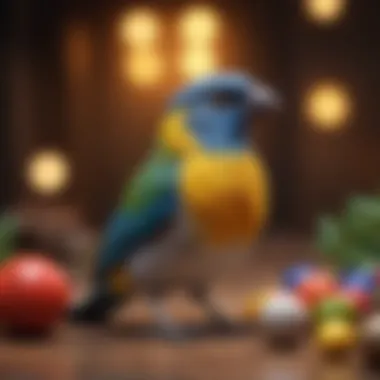
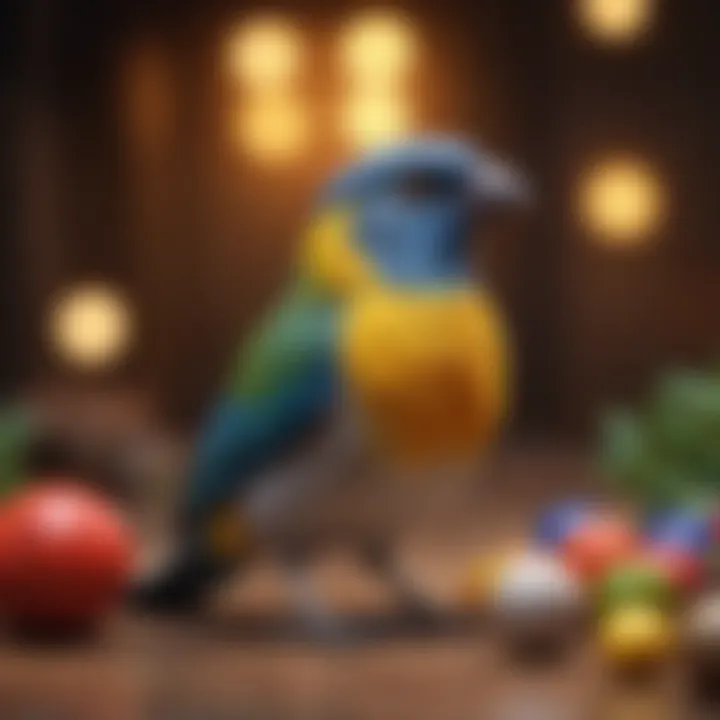
Coping strategies are vital for helping owners deal with this emotional turbulence. Here are some effective ways to navigate the process:
- Open Conversations: Discuss feelings with friends or family who understand the bond with pets.
- Memorializing: Honoring the bird's memory through small memorials or keepsakes.
- Seeking Support: Engaging with communities on platforms like Reddit or Facebook can connect owners with others who share similar experiences.
- Reflective Practices: Journaling thoughts and feelings can help to process emotions healthily.
"Grieving is a personal journey, especially for pet owners. Acceptance comes at different paces, and it's essential to honor your own path."
Emotional considerations are paramount in the journey of pet ownership. Bird owners must recognize the intensity of attachment formed over a relatively short period. By understanding and addressing these feelings, they can craft meaningful and fulfilling relationships with their avian companions, even in the face of inevitable loss.
Culmination
The examination of pet birds with shorter lifespans brings forth crucial insights that impact owners and enthusiasts alike. Understanding the lifespan of these birds is not merely a statistical observation; it serves as a foundation for how we care for them and engage with their unique needs. The ephemeral nature of their lives invites us to approach pet ownership differently, emphasizing the quality of time spent together over sheer duration.
Summary of Key Insights
In reviewing the intricacies surrounding short-lived bird species, several key insights emerge:
- Diverse Species: Various species, such as budgerigars and canaries, are known for limited lifespans. Knowing which birds fall into this category helps potential owners make informed choices.
- Life Factors: Lifespan is determined by genetics, environment, nutrition, and healthcare. Each aspect plays a vital role in enhancing the life quality of these birds.
- Owning Experience: Acknowledging the emotional aspects of pet ownership is important. The attachment formed can be both rewarding and heart-wrenching.
"The depth of the bond with these short-lived companions magnifies the need for quality care and emotional preparedness."
Encouraging a Nurturing Relationship
Building a nurturing relationship with short-lived pet birds requires intentional effort and understanding. Positive interactions, appropriate environment, and consistent care can enrich the experience for both the owner and the bird.
- Engagement: Interacting through play and exploration fosters bonding. Engaging the bird in activities respects its natural behaviors and enhances mental stimulation.
- Environment: Creating a safe and stimulating environment elevates the well-being of the bird. This includes providing toys, secure spaces for flight, and suitable companionship.
- Education: Owners should continually educate themselves about their bird's behavior, diet, and health needs. Resources like avian care books, veterinary associations, and online forums like Reddit can aid in providing up-to-date information.
Ultimately, the goal is to build a meaningful relationship that acknowledges the short lifespan while maximizing the joy and satisfaction of the companionship.
Additional Resources and References
The exploration of pet birds with shorter lifespans goes beyond merely understanding their care and behavior. Additional resources and references provide critical support for bird owners, enriching their relationship with these unique companions. Such resources offer insights on avian health, behavior, and proper husbandry, enhancing the ability of owners to make informed decisions.
Having access to reliable information contributes significantly to the long-term well-being of pet birds. Resources can help identify potential health issues and suggest appropriate preventive measures. They also serve as a guide for owners on specific needs like dietary requirements, environmental enrichment, and social interaction that are crucial for short-lived species.
Some benefits of utilizing additional resources include:
- Enhanced Knowledge: Understanding the specific characteristics and needs of short-lived birds.
- Community Support: Connecting with other bird enthusiasts through forums or social media for shared advice and experiences.
- Accessing Expertise: Finding reputable veterinary professionals and avian specialists who can assist in care and health management.
Further Reading on Avian Care
For those keen on deepening their knowledge, further reading on avian care is essential. There are numerous books and articles that focus on the specialized needs of pet birds with shorter lifespans. Some recommended titles include:
- Birds for Dummies by Gina Spadafori and Brian L. Speer
- The Parrot Handbook by Rachael Hale
These publications often cover:
- Diet and nutrition tailored for different species.
- Behavioral training techniques specific to smaller birds.
- Common health problems and their management.
Additionally, reputable websites like Wikipedia and Britannica provide articles that cover bird species and their characteristics. Such articles can serve as a quick reference for specific queries and expand understanding of avian biology.
Veterinary Associations and Publications
Veterinary associations play an important role in avian health care. They often publish guidelines and research papers that can significantly aid pet bird owners. Associations like the Association of Avian Veterinarians provide resources on best practices for bird care.
Consider exploring:
- Articles on common diseases and how to prevent them.
- Guides on safe training and handling of pet birds.
- Recommendations for finding qualified veterinarians specializing in avian medicine.
These resources foster a deeper understanding among bird owners, enhancing their ability to tend to their pets effectively. Engaging with professional publications and veterinary associations ensures that caregivers are aware of the most recent advancements in bird healthcare and enrichment strategies.
Always remember, the well-being of your pet bird is closely linked to the knowledge and resources you access. This commitment can create a more rewarding relationship with your feathered companion.















